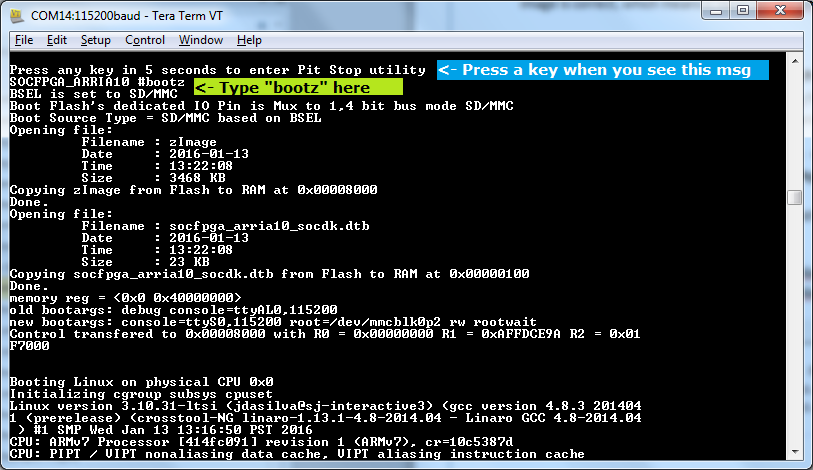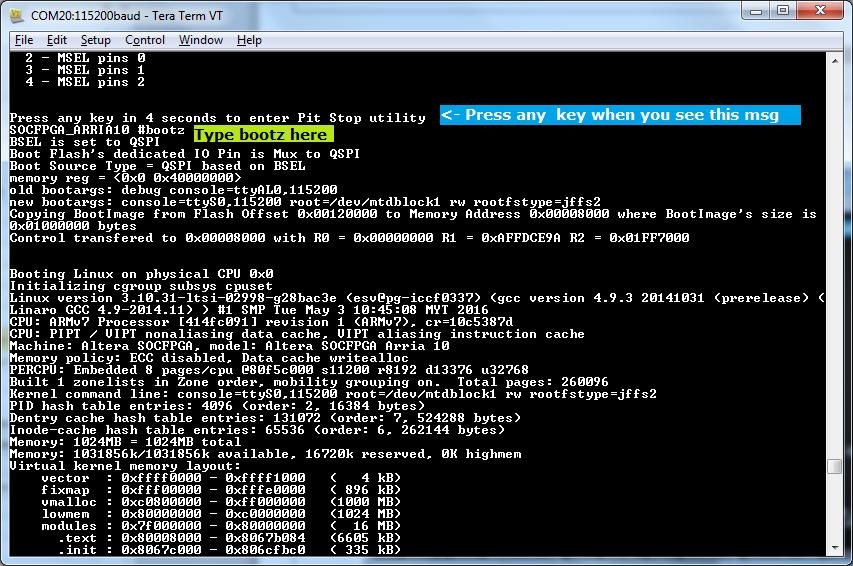Visible to Intel only — GUID: typ1512306178962
Ixiasoft
1.1. Acronyms and Definitions
1.2. Recommended System Requirements
1.3. Installation Folders
1.4. Boot Flow Overview
1.5. Getting Started
1.6. Enabling the UEFI DXE Phase and the UEFI Shell
1.7. Using the Network Feature Under the UEFI Shell
1.8. Creating your First UEFI Application
1.9. Using Arm* DS-5* Intel® SoC FPGA Edition (For Windows* Only)
1.10. Pit Stop Utility Guide
1.11. Porting HWLIBs to UEFI Guidelines
1.12. Tera Term Installation
1.13. Minicom Installation
1.14. Win32DiskImager Tool Installation
1.15. TFTPd64 By Ph.Jounin Installation
1.16. Revision History of Intel® Arria® 10 SoC UEFI Boot Loader User Guide
1.5.1. Compiling the Hardware Design
1.5.2. Generating the Boot Loader and Device Tree for UEFI Boot Loader
1.5.3. Building the UEFI Boot Loader
1.5.4. Creating an SD Card Image
1.5.5. Creating a QSPI Image
1.5.6. Booting the Board with SD/MMC
1.5.7. Booting the Board with QSPI
1.5.8. Early I/O Release
1.5.9. Booting Linux* Using the UEFI Boot Loader
1.5.10. Debugging an Example Project
1.5.11. UEFI Boot Loader Customization
1.5.12. Enabling Checksum for the FPGA Image
1.5.13. NAND Bad Block Management
Visible to Intel only — GUID: typ1512306178962
Ixiasoft
1.5.9.3.2. Booting Linux from the PEI Phase Using SD/MMC or QSPI Manually
If you are currently booting in another operating system and want to boot Linux* from the PEI phase manually, execute the following instructions:
- Boot to the Pit Stop utility. Refer to the Enabling or Disabling the Pit Stop Utility section for instructions.
- Type the bootz command.
Note: This method does not require you to recompile the source code, but you must ensure the SD card image is correct. The SD card must have the zImage file inside the FAT32 partition and also have a Linux* partition.
Figure 80. Boot Linux Manually Using SD/MMC


Figure 81. Boot Linux Manually Using QSPI


Related Information